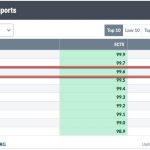Investing in Silver: A Guide for Beginners
Silver has long been considered a valuable precious metal and a popular investment option for individuals looking to diversify their portfolios. In recent years, there has been a renewed interest in silver as investors seek alternative assets to protect against economic uncertainty and inflation. If you are considering investing in silver, here is a comprehensive guide to help you get started.
1. Understand the Market
Before diving into the world of silver investing, it is crucial to do your research and gain a solid understanding of the market dynamics. Silver prices are influenced by a variety of factors, including industrial demand, geopolitical events, inflation rates, and currency movements. Keeping abreast of market news and trends will help you make informed investment decisions.
2. Choose the Right Investment Vehicle
There are several ways to invest in silver, each with its own set of advantages and risks. Some common investment vehicles include physical silver bullion, silver coins, silver ETFs, and silver mining stocks. Physical silver can be purchased in the form of bars or coins, while ETFs provide exposure to silver prices without the need for storage. Mining stocks are another option for investors looking to capitalize on the performance of silver mining companies.
3. Consider Your Investment Goals
Before investing in silver, it is essential to determine your investment goals and risk tolerance. Are you looking to hedge against inflation, diversify your portfolio, or speculate on short-term price movements? Understanding your objectives will help you tailor your investment strategy to align with your financial goals.
4. Develop a Diversified Portfolio
While silver can be a valuable addition to an investment portfolio, it is essential to diversify your holdings across different asset classes to manage risk effectively. Diversification can help protect your investments during market fluctuations and economic downturns. Consider combining silver with other assets such as stocks, bonds, real estate, and precious metals to create a well-rounded investment portfolio.
5. Regularly Monitor Your Investments
Once you have invested in silver, it is important to monitor your holdings regularly and stay informed about market developments. Set aside time to review your investment performance, adjust your portfolio as needed, and stay updated on silver price movements. Consider working with a financial advisor to receive personalized guidance on managing your silver investments effectively.
In conclusion, investing in silver can be a rewarding opportunity for individuals seeking to diversify their investment portfolios and hedge against economic uncertainty. By understanding the market, choosing the right investment vehicles, defining your investment goals, diversifying your portfolio, and monitoring your investments, you can set yourself up for success in the world of silver investing. Remember to conduct thorough research, seek professional advice when needed, and stay informed to make informed and strategic investment decisions.



